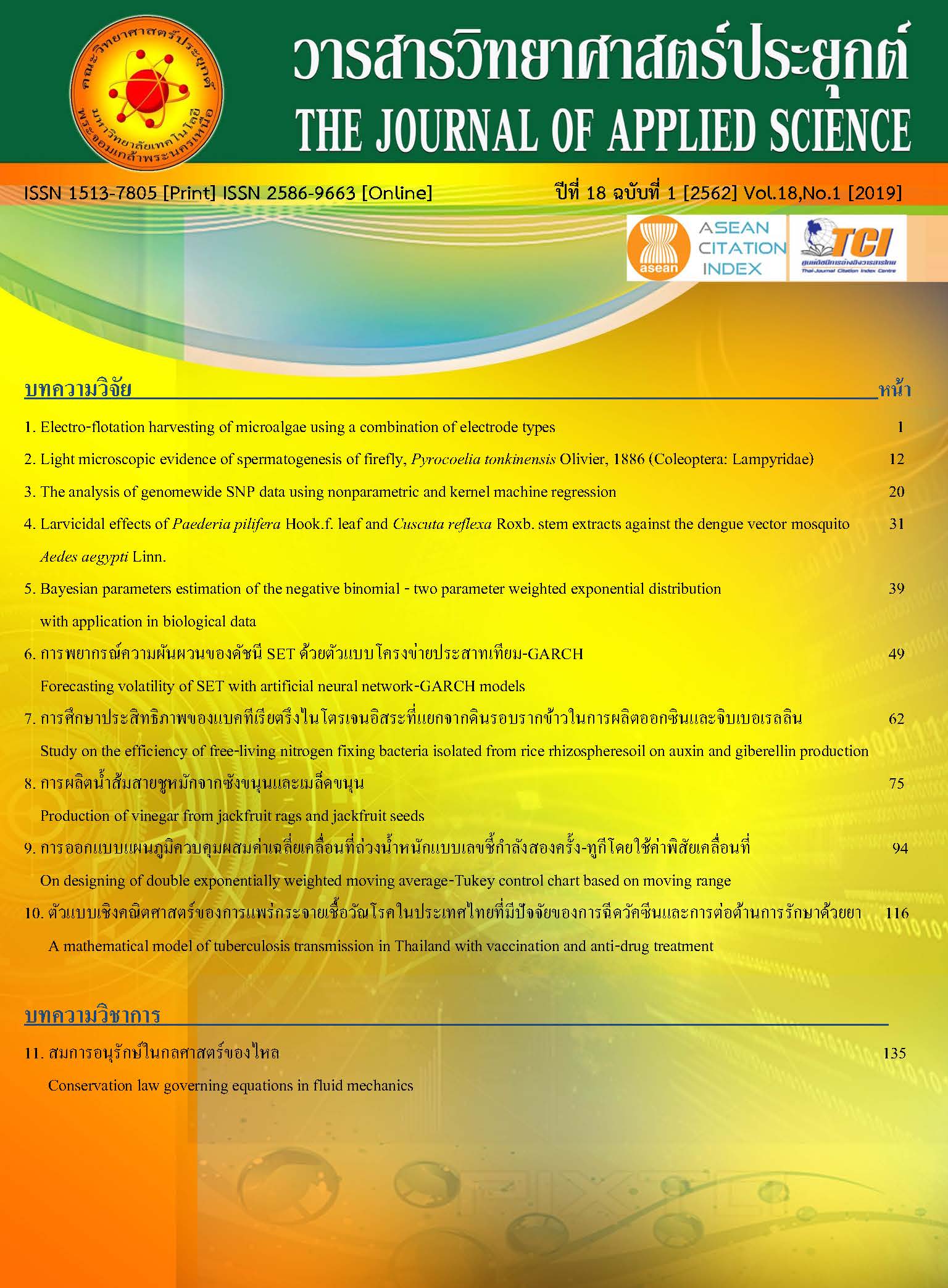Study on the efficiency of free-living nitrogen fixing bacteria isolated from rice rhizospheresoil on auxin and giberellin production
Keywords:
free- living nitrogen fixing bacteria, auxin, gibberellin, rice rhizospheresoilAbstract
This research aimed to study the efficiency of free-living nitrogen fixing bacteria isolated from the samples of rice rhizosphere soil on auxin and gibberellin production. The samples of the rhizophere soil were collected from different areas. The amount of colony of isolated bacteria was counted by using plate count method. The result revealed that 183 isolated bacteria were obtained from soil samples of the organic rice fields, the amount of colony at 1.6x106-2.0x107cfu/g and the 127 isolated bacteria were obtained from soil samples of the chemical rice fields, the amount of colony at 1.2x103-1.9x105cfu/g. Nitrogen fixation was tested by using bromothymol blue reagent indicator method and selecting of free-living nitrogen fixing bacteria was found of 26 isolates. Auxin production test of the selected nitrogen fixing bacteria was conducted by using tryptophan as an initial sabstance and the amount of auxin was analyzed by using Salkowski coloring reagent method. The result showed that 6 isolates produced the most auxin by using tryptophan concentrations of 1,000 μg/mL and the isolate PY7-6 produced the most auxin of 23.9 mg/L, while the rest, LP8-1, CR1-2, CM12-4, PY7-5 and CM5-2, produced auxin from 7.0 to 22.3 mg/L. Gibberellin production test and gibberellin content analysis by HPLC revealed that 2 isolates: CM12-4 and LP8-1 could produced gibberellin at 13.74 and 3.94 mg/L, respectively. Classification of bacteria from sequence analysis of the 16S rRNA gene indicated that there were 4 species: CM12-4 (Pantoea agglomerans), LP8-1 (Stenotrophomonas maltophilia), PY7-5 (Bacillus cereus) and PY7-6, CR1-2 and CM5-2 (Pseudomonas nitroreducens). In conclusion, Pseudomonas nitroreducens (PY7-6) was the best free-living nitrogen fixing bacteria from this study which had the efficiency to produce nitrogen and auxin for further study and develop as biofertilizer.


